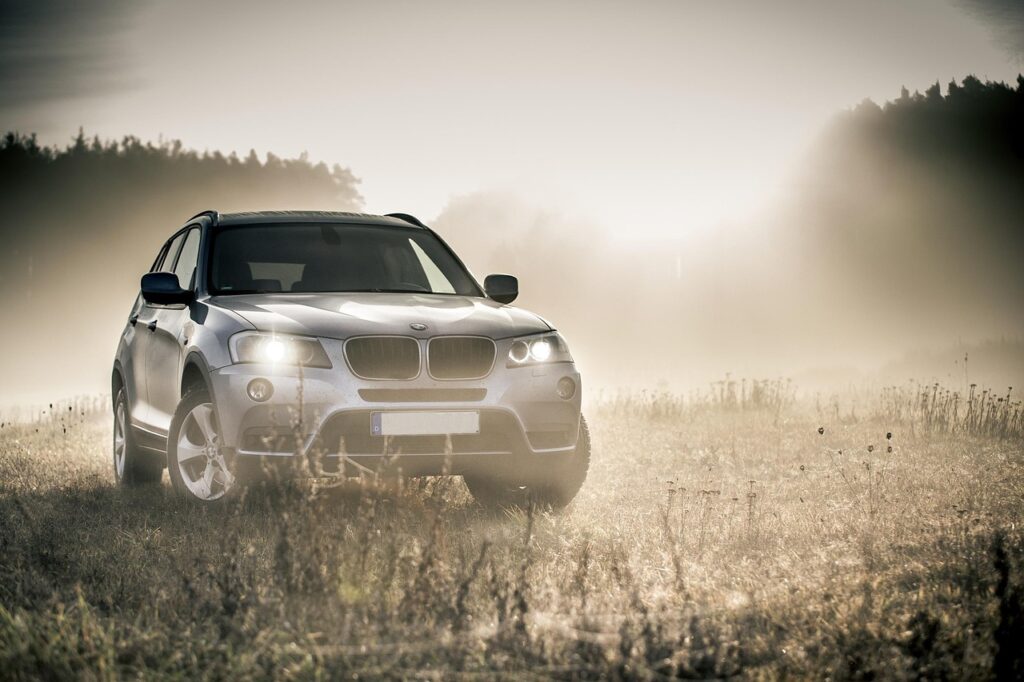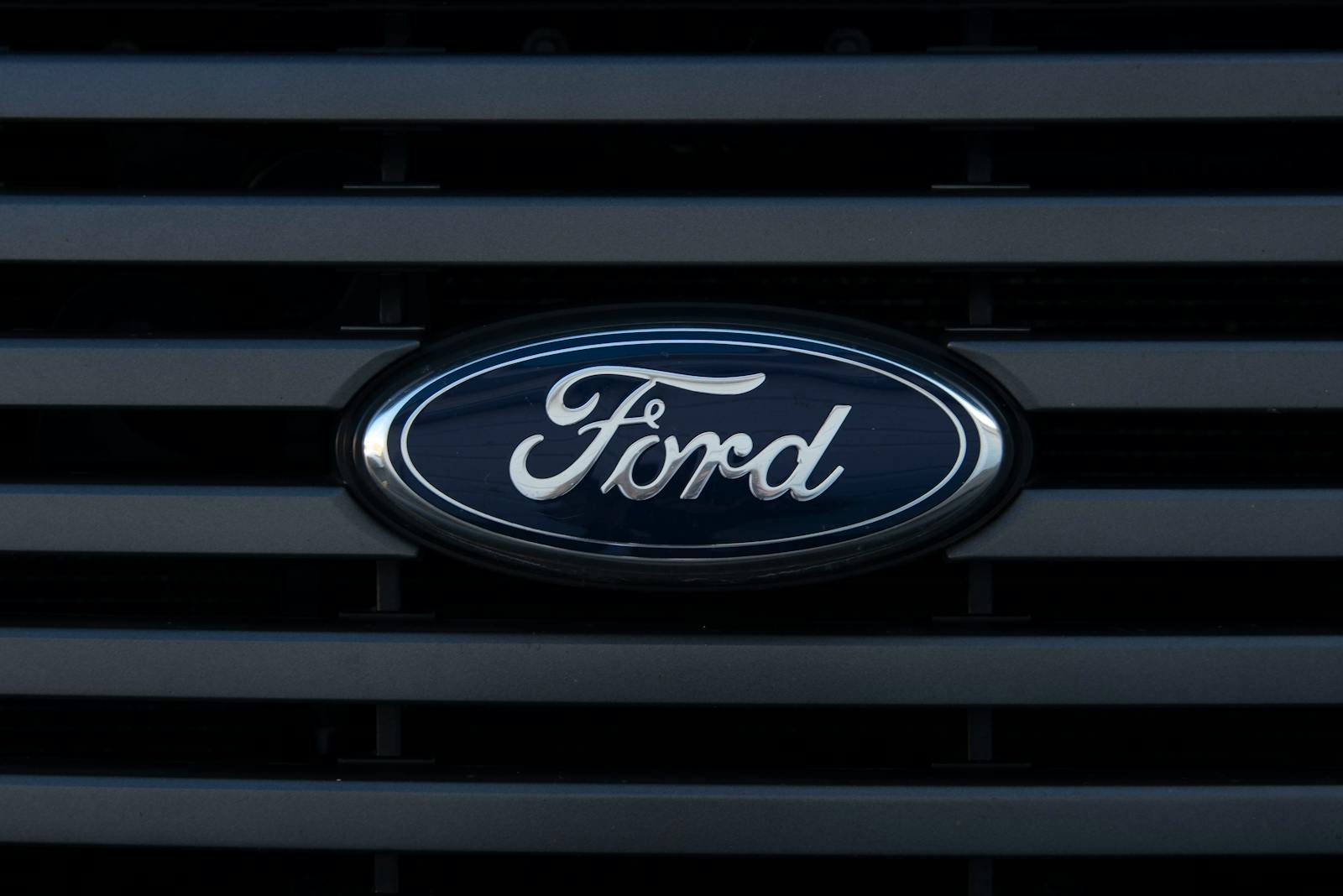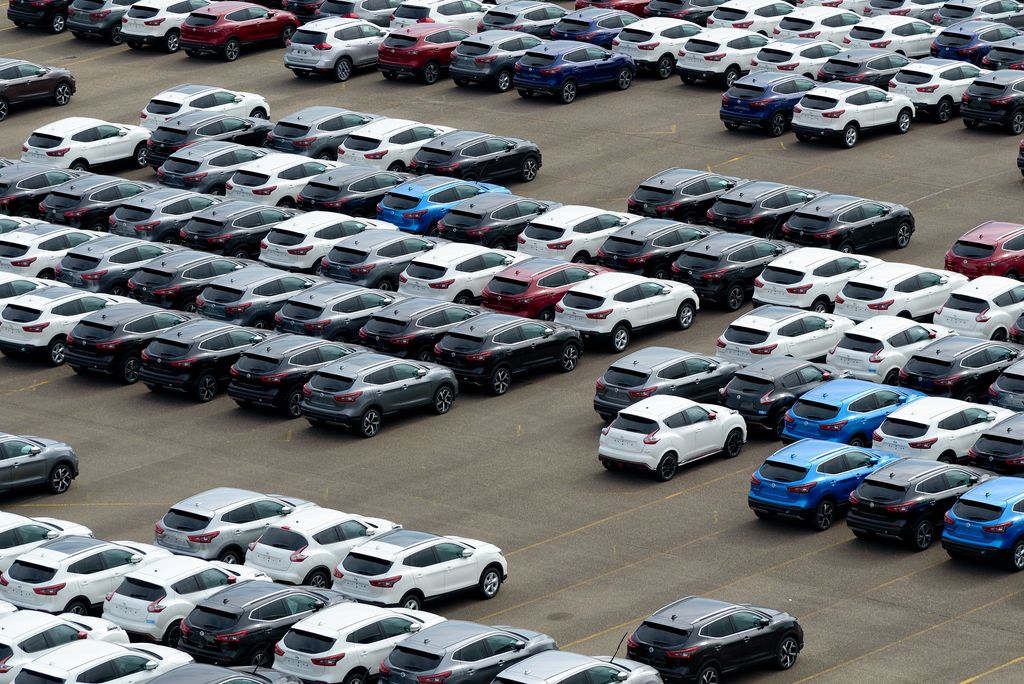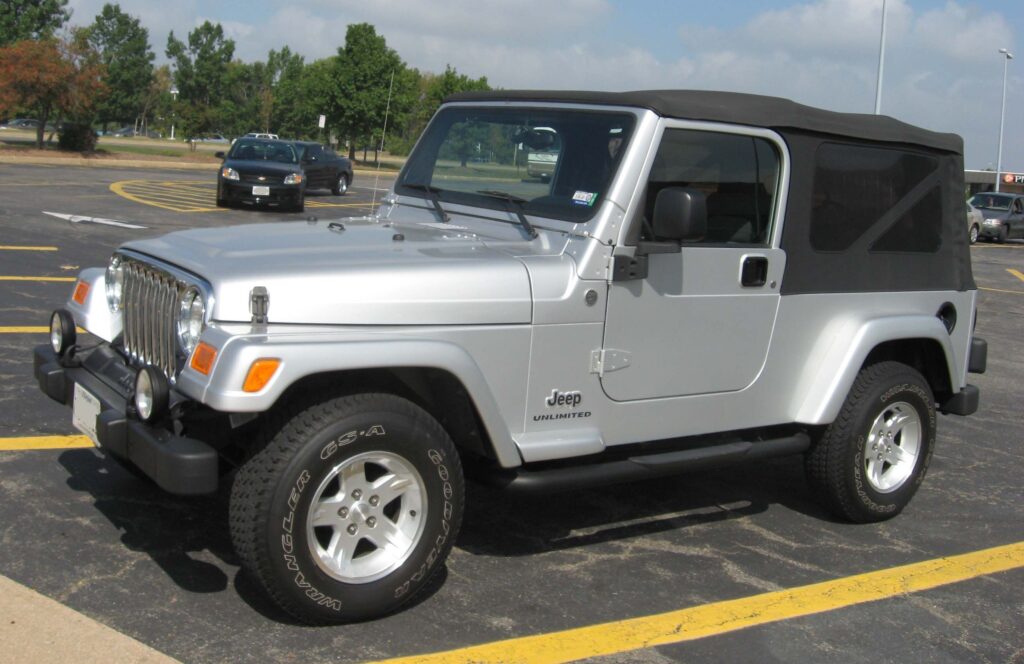
When considering the joy of a new vehicle, the upfront purchase price is often the primary focus. However, savvy car buyers know that the true cost of ownership extends far beyond the showroom floor. While reliable workhorses like the 20-year-old Honda Civic are celebrated for their longevity and affordable upkeep, a significant number of vehicles quickly transform into financial black holes, draining wallets through exorbitant maintenance costs or shockingly rapid depreciation.
This article aims to pull back the curtain on the hidden financial burdens associated with owning certain high-cost vehicles. We’ll delve into the specifics of what makes these cars such formidable money pits, whether it’s the relentless frequency of repairs, the staggering price of specialized parts, or the precipitous drop in resale value that leaves owners reeling. Our expert-driven analysis will equip you with the knowledge to make informed decisions and steer clear of common pitfalls.
From luxury SUVs riddled with complex electronic failures to high-performance sports cars demanding premium-grade upkeep, and even once-innovative electric vehicles losing value at an alarming rate, we’ve meticulously compiled a list of 15 vehicles known for making owners — and their wallets — shed a tear. Prepare to explore the real-world expenses that define the “maintenance shame” of these particular models.
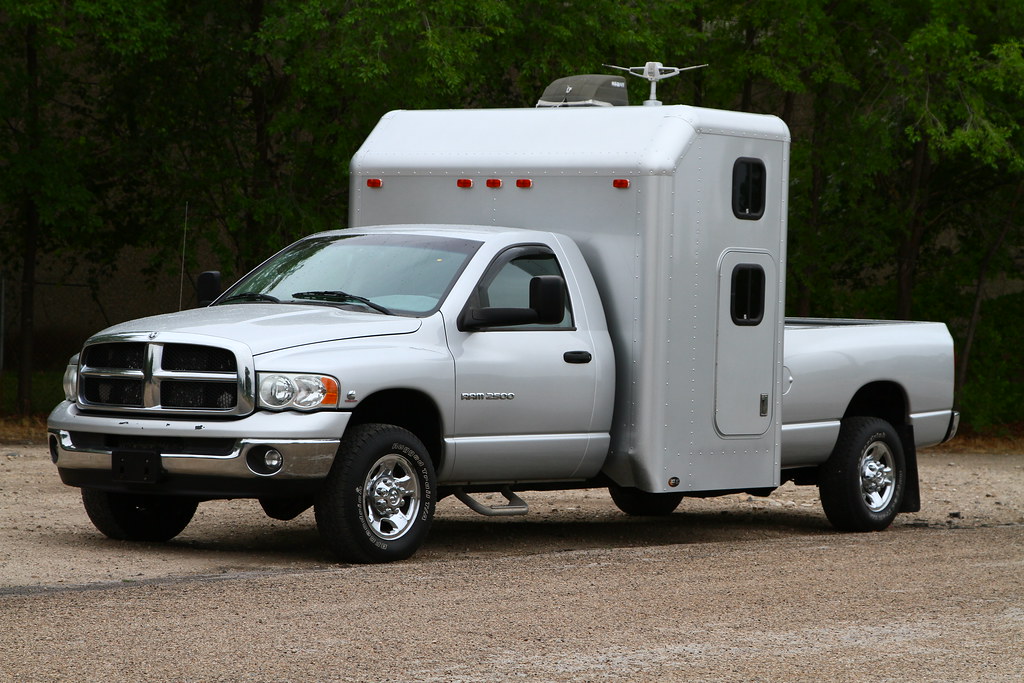
1. **Ram 2500**The Ram 2500 distinguishes itself as the most expensive non-luxury brand for repairs, a title that carries significant weight for anyone eyeing a heavy-duty pickup. CarEdge estimates the ten-year cost of maintenance for this vehicle at a staggering $27,423, far surpassing what many might expect from a non-luxury designation.
The core of these substantial expenses lies in a combination of frequent breakdowns and the specialized, costly parts required for repair. Melanie Musson, an auto industry expert with AutoInsurance.org, shed light on the specific vulnerabilities of this truck. She noted that “With EPA guidelines and restrictions, Ram diesel engines get outfitted with so many regulators that the engines can’t work the way they were designed.”
This over-regulation leads to a cascade of mechanical failures. Musson highlighted that “The fuel injectors often stop working, the transmission has a history of problems [and] even the power steering can fail.” Beyond these major, debilitating issues, the Ram 2500’s reliability woes extend to smaller, yet still frustrating, repairs. Owners frequently report electrical problems with windows and door locks.
These chronic issues collectively ensure that the Ram 2500 becomes a consistent guest at the mechanic’s shop. As Musson starkly advises, prospective buyers should “Steer clear if you don’t want to become your local mechanic’s favorite customer”—a candid warning for those who value predictable running costs and peace of mind.
Car Model Information: 2014 RAM 2500 Tradesman
Name: Dodge Ram / Ram pickup
Caption: 2017 Ram 1500 Express
Manufacturer: Dodge
ModelYears: 1981–present
Production: October 1980 – present
Class: Pickup truck#Full-size pickup truck,Pickup truck#Heavy-duty pickup truck
Layout: Front-engine, rear-wheel-drive layout,rear-wheel drive
Predecessor: Dodge D series
Categories: 1990s cars, 2000s cars, 2010s cars, 2020s cars, All-wheel-drive vehicles
Summary: The Ram pickup (marketed as the Dodge Ram until 2010 when Ram Trucks was spun-off from Dodge) is a full-size pickup truck manufactured by Stellantis North America (formerly Chrysler Group LLC and FCA US LLC) and marketed from 2010 onwards under the Ram Trucks brand. The current fifth-generation Ram debuted at the 2018 North American International Auto Show in Detroit, Michigan, in January of that year.
Previously, Ram was part of the Dodge line of light trucks. The Ram name was introduced in October 1980 for model year 1981, when the Dodge D series pickup trucks and B series vans were rebranded, though the company had used a ram’s-head hood ornament on some trucks as early as 1933.
Ram trucks have been named Motor Trend magazine’s Truck of the Year eight times; the second-generation Ram won the award in 1994, the third-generation Ram heavy-duty won the award in 2003, the fourth-generation Ram Heavy Duty won in 2010 and the fourth-generation Ram 1500 won in 2013 and 2014, and the current fifth-generation Ram pickup became the first truck in history to win the award four times, winning in 2019, 2020, 2021 and most recently, 2025.
Get more information about: Ram pickup
Buying a high-performing used car >>>
Brand: Ram Model: 2500
Price: $28,455 Mileage: 147,679 mi.
Read more about: 14 Fast Food Chains That Are Seriously Struggling (And Why Diners Are Saying ‘Hard Pass’)
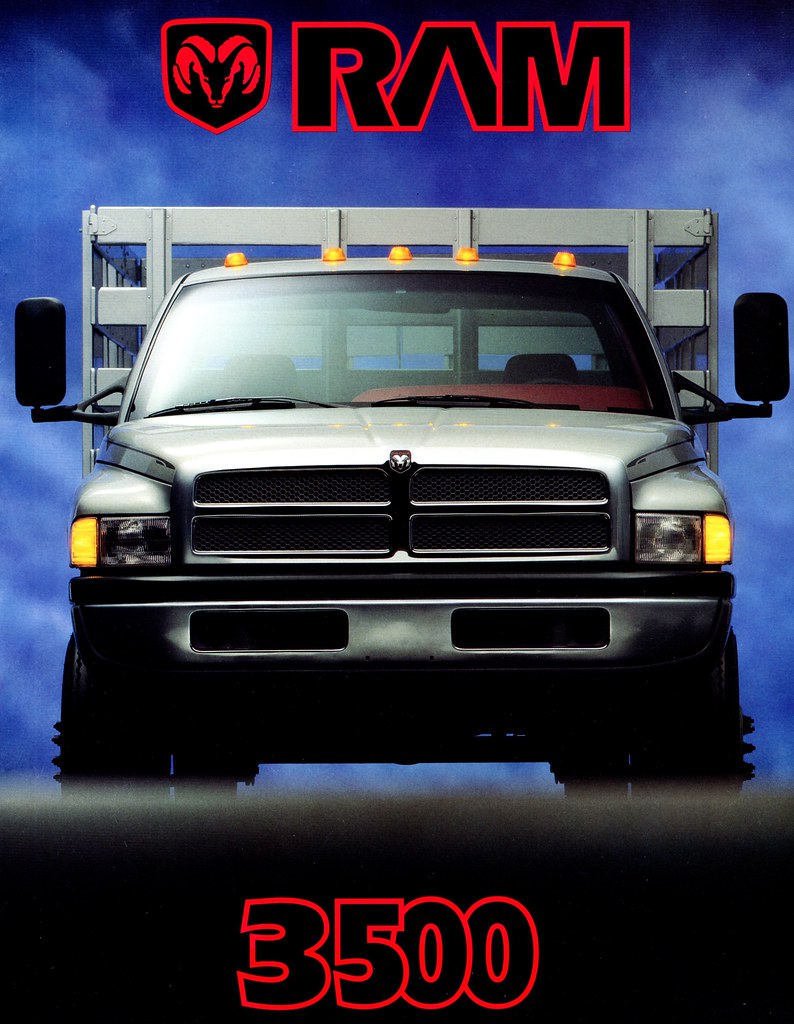
2. **Dodge Ram 3500**Building upon the reputation of its 2500 sibling, the Dodge Ram 3500 solidifies its place as another heavy-duty truck that, while built for immense capability, comes with an equally immense financial commitment for maintenance. This beast is designed for towing and tackling the toughest jobs imaginable, but its robust construction and specialized components translate directly into significant upkeep expenses.
Car Edge’s estimations place the ten-year maintenance cost for the Dodge Ram 3500 at a staggering $26,900. This figure positions it “way above the industry average” for vehicles in its class, underscoring the extraordinary demands it places on an owner’s budget. Such costs are a direct consequence of the powerful, yet complex, systems integrated into its design.
Specifically, owners should anticipate spending considerably on routine diesel engine servicing, which is inherently more intricate and costly than petrol engine maintenance. Furthermore, the immense stresses placed on its drivetrain during heavy-duty tasks mean that transmission repairs and suspension wear are not uncommon occurrences.
These expenses pile up rapidly, ensuring that while the Dodge Ram 3500 excels at its intended purpose, it simultaneously demands a substantial, ongoing financial investment to keep it in peak working condition. Its power and durability come at a steep, unyielding cost that few buyers fully anticipate.
Car Model Information: 2023 Toyota Camry LE
Name: Dodge Ram / Ram pickup
Caption: 2017 Ram 1500 Express
Manufacturer: Dodge
ModelYears: 1981–present
Production: October 1980 – present
Class: Pickup truck#Full-size pickup truck,Pickup truck#Heavy-duty pickup truck
Layout: Front-engine, rear-wheel-drive layout,rear-wheel drive
Predecessor: Dodge D series
Categories: 1990s cars, 2000s cars, 2010s cars, 2020s cars, All-wheel-drive vehicles
Summary: The Ram pickup (marketed as the Dodge Ram until 2010 when Ram Trucks was spun-off from Dodge) is a full-size pickup truck manufactured by Stellantis North America (formerly Chrysler Group LLC and FCA US LLC) and marketed from 2010 onwards under the Ram Trucks brand. The current fifth-generation Ram debuted at the 2018 North American International Auto Show in Detroit, Michigan, in January of that year.
Previously, Ram was part of the Dodge line of light trucks. The Ram name was introduced in October 1980 for model year 1981, when the Dodge D series pickup trucks and B series vans were rebranded, though the company had used a ram’s-head hood ornament on some trucks as early as 1933.
Ram trucks have been named Motor Trend magazine’s Truck of the Year eight times; the second-generation Ram won the award in 1994, the third-generation Ram heavy-duty won the award in 2003, the fourth-generation Ram Heavy Duty won in 2010 and the fourth-generation Ram 1500 won in 2013 and 2014, and the current fifth-generation Ram pickup became the first truck in history to win the award four times, winning in 2019, 2020, 2021 and most recently, 2025.
Get more information about: Ram pickup
Buying a high-performing used car >>>
Brand: Dodge Model: Ram 3500
Price: $25,600 Mileage: 23,699 mi.
Read more about: The 15 Most Reliable Pickup Trucks of 2025 Ranked by Owner Survey
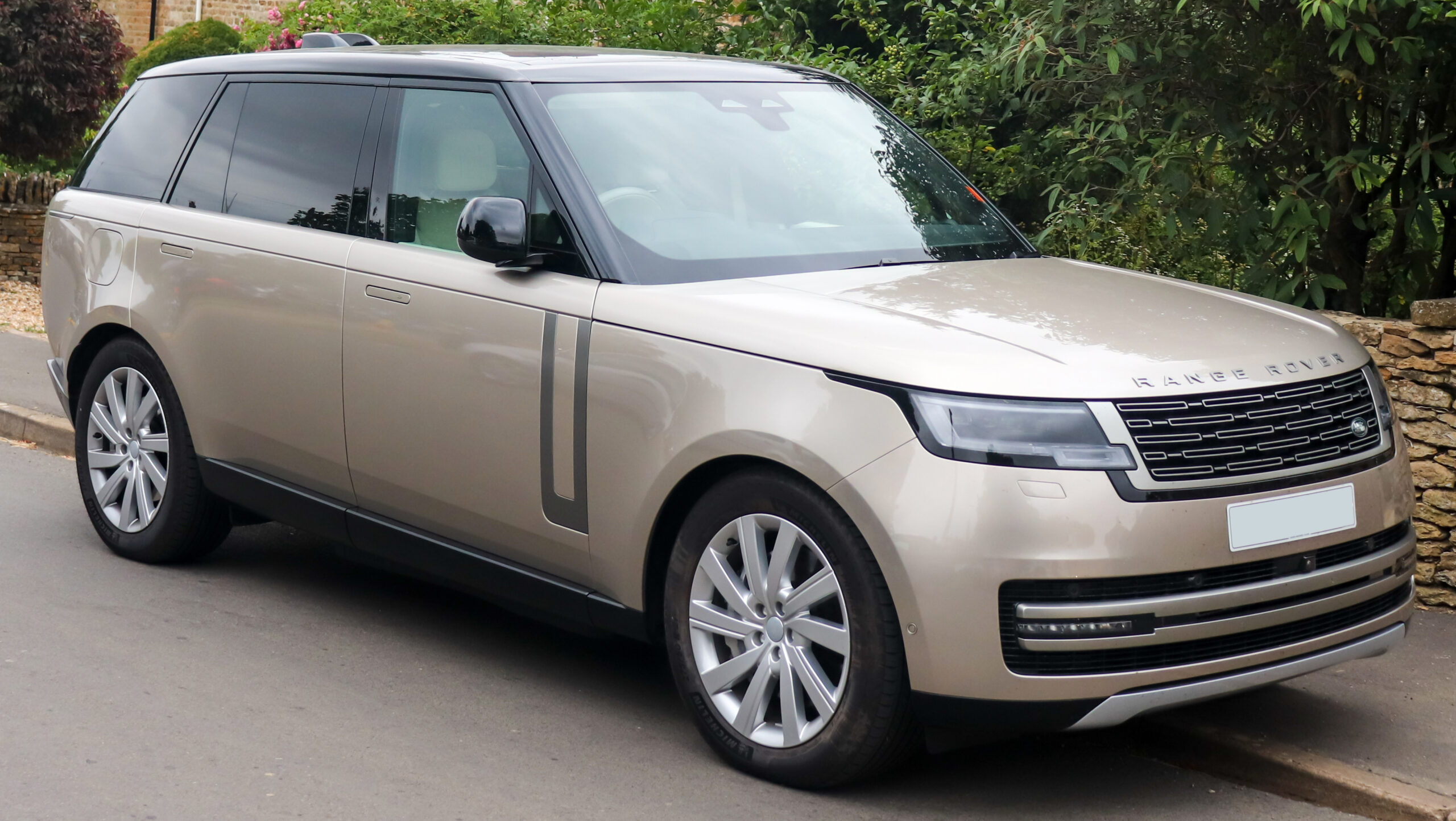
3. **Land Rover Range Rover**The Land Rover Range Rover is an iconic vehicle, beloved by drivers for its compelling blend of rugged strength and sumptuously luxurious interiors. However, this appealing combination often conceals a darker truth: a propensity for frequent and incredibly costly visits to the repair shop. As one expert starkly put it, “It’s all fun and games and four-wheeling until the things end up spending six months out of the year in the shop.”
CarEdge estimated the average cost of repairs over the first ten years of ownership for a Range Rover at a nauseating $20,136. Another report from Car Edge confirms a similar figure of $18,737 over 10 years for maintenance, painting a clear picture of its financial demands. These figures are not mere estimates; they reflect a consistent pattern of high-expense issues.
A primary culprit behind these inflated bills is the advanced air suspension system, a common point of failure. Marc Skirvin, who repairs older vehicles at Cash Auto Salvage, recounted, “A Range Rover came into the shop recently with a failed air suspension, which is a $4,000 repair that almost every single one of them will have to have done at some point after 100,000 miles.” This single repair alone can equate to the annual maintenance cost of many less demanding vehicles.
Beyond specific component failures, the very nature of Range Rover parts contributes to the financial strain. Skirvin also noted, “The scarcity and high prices of repair parts adds to the cost.” Even seemingly minor repairs can escalate into “jaw-dropping invoices,” making the Range Rover as demanding on the wallet as it is stylish on the road.
Car Model Information: 2023 Toyota Camry LE
Caption: 2022 Range Rover SE P440e (L460, fifth generation, United Kingdom)
Aka: unbulleted list
Name: Range Rover
Manufacturer: unbulleted list
Production: 1969–present
Assembly: unbulleted list
Class: unbulleted list
Layout: Front-engine, four-wheel-drive layout
Sp: uk
Categories: 1980s cars, 1990s cars, 2000s cars, 2010s cars, 2020s cars
Summary: The Land Rover Range Rover, generally shortened to Range Rover, is a 4WD luxury mid to full size crossover marque and sub-brand of Jaguar Land Rover, owned by India-based Tata Motors. The Range Rover line was launched in 1970 by British Leyland and since 2022 is in its fifth generation.
Additional models have been launched under the Range Rover name, including the Range Rover Sport, Range Rover Evoque, and Range Rover Velar.
Get more information about: Range Rover
Buying a high-performing used car >>>
Brand: Land Rover Model: Range Rover
Price: $25,600 Mileage: 23,699 mi.
Read more about: Fast Food Confessions: 14 Menu Items Workers Secretly Hope You Never Order
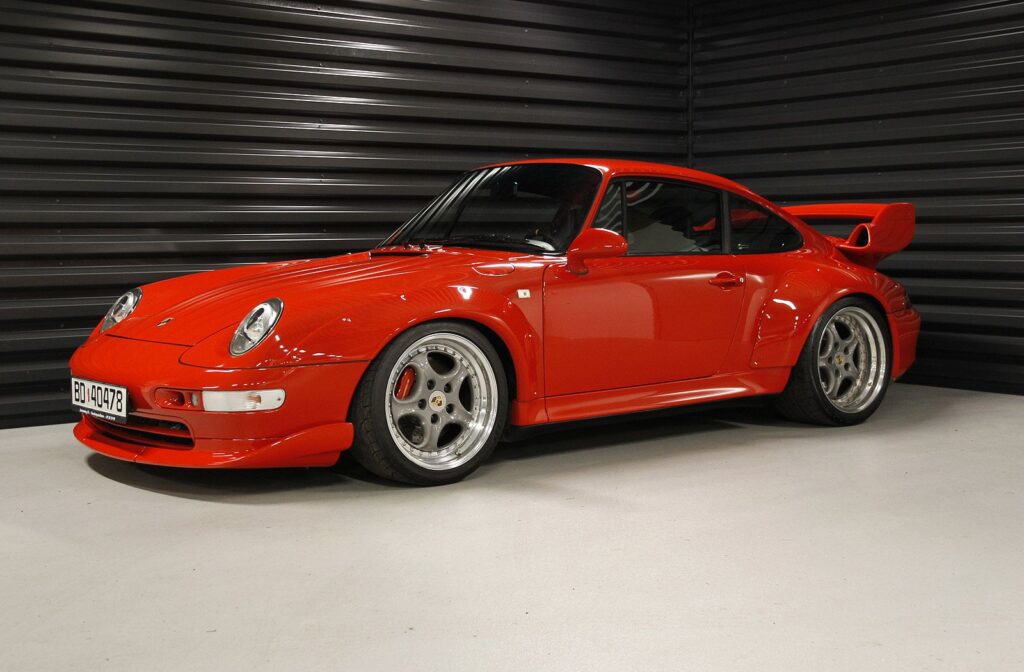
4. **Porsche 911**The Porsche 911 stands as a paragon of automotive engineering, a symbol of thrilling performance and iconic design. Yet, owning this masterpiece involves more than just the exhilarating driving experience; it also comes with a formidable financial commitment to maintenance. According to MotorHead, the maintenance costs for a Porsche 911 can reach approximately $20,615 over a decade.
The reason for such steep expenses is intrinsically linked to the 911’s high-performance DNA. Every component, from its precision-engineered engine to its responsive braking system, is designed for optimal performance, and these “high-performance parts demand specialized care.” This translates to specialized labor, higher-grade lubricants, and more expensive replacement parts.
Routine services that might be a simple affair for a standard car become significantly more costly for a 911. Brake pad replacements, for instance, involve premium materials and precise installation, while oil changes require specific, high-quality synthetic oils designed for its demanding engine. These are not mere adjustments; they are critical procedures to maintain the car’s legendary capabilities.
Ultimately, the Porsche 911 is a vehicle that rewards its owners with an unparalleled driving experience, but it equally demands a deep commitment to its meticulous upkeep. The thrill of the drive is undeniably coupled with the reality of an expensive, specialized maintenance regimen that ensures its continued peak performance.
Car Model Information: 2025 Porsche 911 Carrera
Name: Porsche 911
Caption: The 1 millionth 911 produced on display at Volkswagen Group Forum, Berlin
Designer: Ferdinand Alexander Porsche
Manufacturer: Porsche
Production: September 1964 – present
Assembly: Stuttgart,Baden-Württemberg
Class: Sports car
BodyStyle: unbulleted list
Related: unbulleted list
Layout: Rear-engine design,rear-wheel drive
Predecessor: Porsche 356
Categories: 1970s cars, 1980s cars, 1990s cars, 2+2 coupés, 2000s cars
Summary: The Porsche 911 model series (pronounced Nine Eleven or in German: Neunhundertelf, or colloquially Neunelfer) is a family of two-door, high performance rear-engine sports cars, introduced in September 1964 by Porsche of Stuttgart, Germany, and now in its eighth generation. All 911s have a rear-mounted flat-six engine, and usually 2+2 seating, except for special 2-seater variants. Originally, 911s had air-cooled engines, and torsion bar suspension, but the 911 has been continuously enhanced, and evolved across generations. Though the 911 core concept has remained largely unchanged, water-cooled engines were introduced with the 996 series in 1998, and front and rear suspension have been replaced by Porsche-specific MacPherson suspension up front, and independent multi-link rear suspension.
The 911 has been raced extensively by private and factory teams, in a variety of classes. It is among the most successful competition cars. In the mid-1970s, the naturally aspirated 911 Carrera RSR won world championship races including Targa Florio and the 24 Hours of Daytona. The 911-derived 935 turbo also won the 24 Hours of Le Mans in 1979. Porsche won the World Championship for Makes in 1976, 1977, 1978, and 1979 with 911-derived models.
In a 1999 poll to determine the Car of the Century, the 911 ranked fifth — one of two in the top five that had remained continuously in production (the original Beetle remained in production until 2003). The one millionth example was manufactured in May 2017 and is in the company’s permanent collection.
Get more information about: Porsche 911
Buying a high-performing used car >>>
Brand: Porsche Model: 911
Price: $158,691 Mileage: 5,931 mi.
Read more about: Your Ultimate Guide to the 15 Best States for Off-Roading and Unrestricted Public Land Access
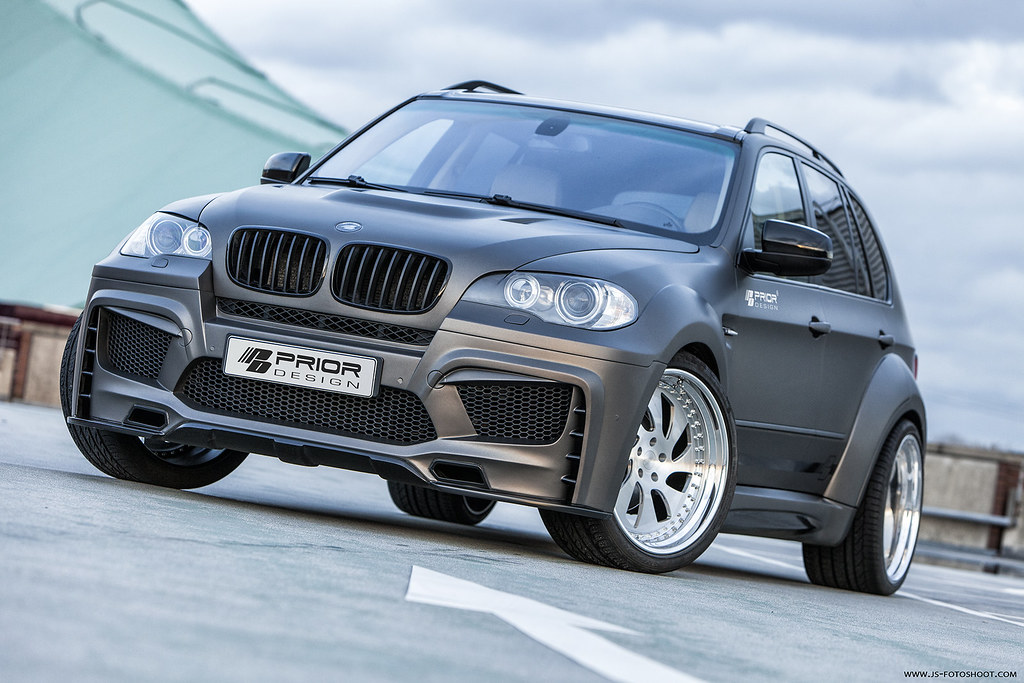
5. **BMW X5**For those who appreciate a blend of luxury and dynamic performance in an SUV, the BMW X5 often presents itself as an attractive option. However, beneath its sophisticated exterior and engaging ride dynamics lies a potential for significant financial outlay when it comes to keeping it on the road. The adage, “Do you love the ride? Well, you better love the repair bills, too!” rings particularly true for the X5.
Car Edge’s data reveals that maintaining a BMW X5 can accumulate costs totaling approximately $18,738 over a ten-year period. This substantial sum positions the X5 “among the most expensive SUVs to maintain,” a reality that can quickly temper the initial enthusiasm of ownership. The complexity of its engineering is a double-edged sword, delivering performance but demanding expert, expensive care.
The list of potential financial drains is extensive, ranging from “transmission troubles to finicky electronics and pricey suspension repairs.” BMW’s advanced technological features, while enhancing the driving experience, often come with a higher risk of failure and a steeper cost for diagnostics and replacement of proprietary parts. The intricate suspension systems, designed for both comfort and agility, can be particularly expensive to service or repair.
Therefore, while the BMW X5 offers a compelling package of luxury and performance, prospective owners must enter with their eyes wide open to the substantial, long-term financial commitment required. Ignoring these potential costs means risking significant budget strain when the inevitable maintenance and repair needs arise.
Car Model Information: 2022 BMW X5 M50i
Name: BMW X5
Manufacturer: BMW
Class: Mid-size,luxury vehicle,crossover SUV
BodyStyle: SUV
Production: 1999–present
Layout: Front-engine, four-wheel-drive layout,Front-engine, rear-wheel-drive layout
Categories: 2000s cars, 2010s cars, All-wheel-drive vehicles, All articles with unsourced statements, Articles with short description
Summary: The BMW X5 is a mid-size luxury crossover SUV produced by BMW. The X5 made its debut in 1999 as the E53 model. It was BMW’s first SUV. At launch, it featured all-wheel drive and was available with either a manual or automatic gearbox. The second generation was launched in 2006, and was known internally as the E70. The E70 featured the torque-split capable xDrive all-wheel drive system mated to an automatic gearbox. In 2009, the X5 M performance variant was released as a 2010 model.
BMW marketed the X5 officially as a “Sports Activity Vehicle” (SAV), rather than an SUV, to indicate its on-road handling capability despite its large dimensions. The X5 signaled a shift away from the utilisation of body-on-frame construction, in favour of more modern monocoque chassis construction. Although the Mercedes-Benz M-Class was introduced more than a year prior to the X5, the X5 was the first to utilise a monocoque chassis. The M-Class used body-on-frame construction until its second generation.
The X5 is primarily manufactured in North America, at BMW Group Plant Spartanburg. Assembly operations also took place in Russia by Avtotor until February 2022, along with operations in India, Indonesia, Malaysia, and Thailand. The X5 is also modified for armoured security versions, at the BMW de México Toluca plant.
The automaker’s SAV series, which was started by the X5, has expanded with derivations of other number-series BMWs. This began in 2003 with the X3, and continued in 2008 with the X6 (which shares its platform with the X5).
Get more information about: BMW X5
Buying a high-performing used car >>>
Brand: BMW Model: X5
Price: $55,080 Mileage: 31,157 mi.
Read more about: Decoding the Market: 10 Classic Imports Collectors Pass On and Why
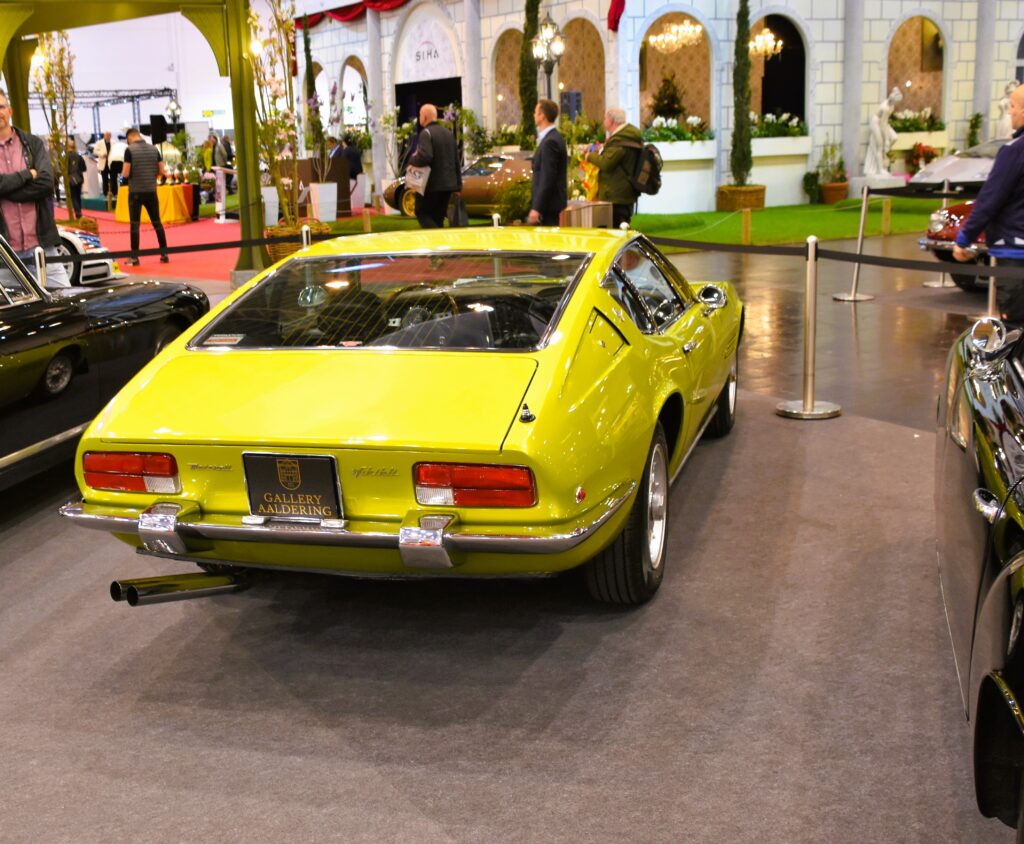
6. **Maserati Ghibli**At its launch, the Maserati Ghibli aimed to be a formidable contender in the executive sports saloon segment, promising a blend of Italian flair with powerful performance. While it certainly boasts “promising looks and sound,” its journey has been fraught with challenges that have made it a significant financial drain for its owners, stemming from both high maintenance costs and remarkably steep depreciation.
From a maintenance perspective, the Ghibli demands serious financial commitment. Consumer Affairs reports that “annual servicing exceeding $1,600” is a typical expectation for owners. This is just the beginning; the car is notorious for a range of issues that keep mechanics busy and owners perpetually on edge. Common problems include “transmission issues, temperamental suspension, clutch problems, wheel damage, and pricey brake jobs.”
Doug DeMuro aptly characterized the Ghibli in the context of its costs, questioning whether it’s a “terrible way to spend $85,000.” This sentiment is amplified when considering its depreciation. The Ghibli “loses nearly 70% of its value in just three years.” For a V8-powered Ultima version with an initial purchase price of almost £160,000, you’ll recoup only around £49,000 when it’s time to sell—a loss of over £110,000.
The root causes of this rapid value erosion are attributed to “high pricing, inconsistent quality, and a decade-long production run with minimal updates.” This combination of factors has hampered its market appeal, making the Maserati Ghibli a luxury vehicle that demands not only passion but also exceptionally deep pockets, due to its dual burden of high upkeep and severe value loss.
Car Model Information: 2014 Maserati Ghibli Base
Name: Maserati Ghibli
Caption: 2018 Maserati Ghibli GranLusso
Manufacturer: Maserati
Assembly: Modena,Grugliasco,Turin
Class: Grand tourer,Executive car
BodyStyle: fastback,coupé,Roadster (automobile),Sedan (automobile)
Production: AM115: 1967–1973,AM336: 1992–1998,M157: 2013–2023
Categories: 1970s cars, 1990s cars, 2010s cars, Articles with short description, CS1 Italian-language sources (it)
Summary: Maserati Ghibli is the name of three different cars produced by Italian automobile manufacturer Maserati: the AM115, a V8 grand tourer from 1967 to 1973; the AM336, a V6 twin-turbocharged coupé from 1992 to 1998; and the M157, an executive saloon from 2013 to 2023.
Ghibli is the Libyan Arabic name for the hot dry south-westerly wind of the Libyan desert.
Get more information about: Maserati Ghibli
Buying a high-performing used car >>>
Brand: Maserati Model: Ghibli
Price: $10,980 Mileage: 83,121 mi.
Read more about: The Costly Truth: 14 Classic Cars That Are Simply Not Worth Restoring for the Savvy Enthusiast
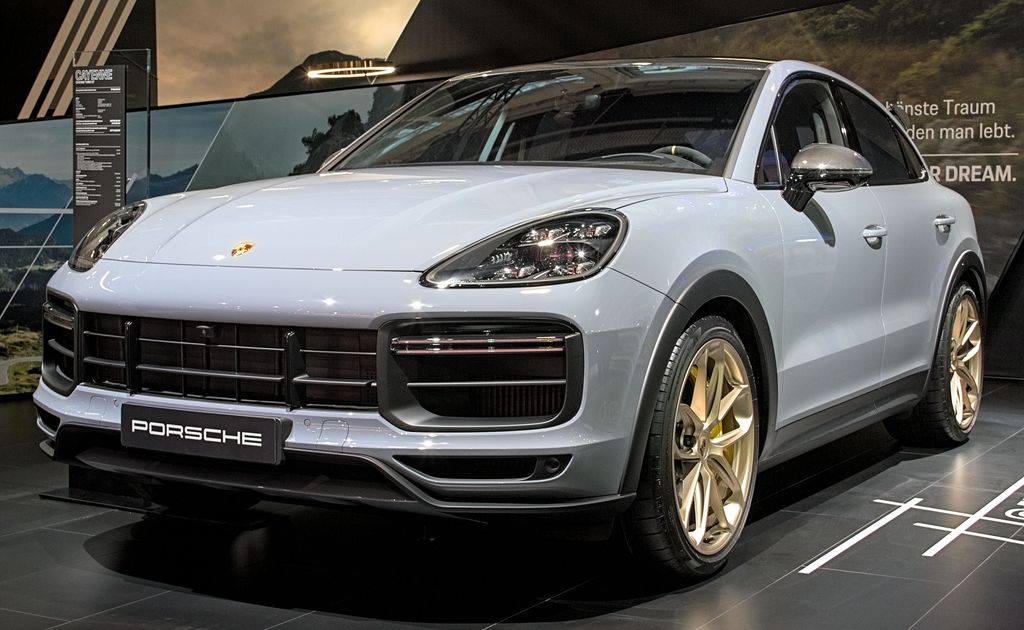
7. **Porsche Cayenne**The Porsche Cayenne is, without question, a visually stunning SUV that embodies both performance and luxury. However, beneath its sleek exterior and dynamic capabilities lies a truth that can be financially unappealing for owners: its repair bills are anything but pretty. This disconnect between aesthetic appeal and fiscal reality is a common thread among high-performance, luxury vehicles.
According to Alan Gelfand, an auto mechanic and owner of German Car Depot, the expensive nature of Cayenne maintenance stems from “The combination of performance parts and high labor expenses.” Porsche vehicles, by design, utilize specialized components engineered for their demanding specifications, which are inherently more costly to replace than generic parts. Coupled with the expert labor required for their installation and diagnostics, routine and unexpected repairs quickly escalate into significant sums.
Owners frequently encounter a specific set of notorious issues that contribute heavily to these bills. Gelfand noted that “Owners typically end up having to fix engine cooling pipes and driveshaft issues, and make expensive brake repairs.” These are not minor fixes but critical repairs that directly impact the vehicle’s safety and performance, leaving little room for deferment.
The broader financial picture for Porsche ownership further solidifies the Cayenne’s position as a money pit. Consumer Reports, in its analysis, “ranked Porsches as the second most expensive car brand to maintain — behind Land Rover.” This puts the Cayenne squarely in the upper echelons of vehicles that demand a substantial, ongoing financial commitment from their owners, making its beauty a costly indulgence.
Continuing the Revelation: Examining 8 More High-Cost Vehicles That Become Financial Black Holes Through Unexpected Repairs and Steep Value Loss
Our journey through the landscape of vehicles that can quickly become financial liabilities continues. Beyond the initial purchase price, the true test of a vehicle’s value often lies in its long-term reliability and its ability to retain its worth. This section further illuminates the hidden costs of ownership, delving into additional models known for either their budget-busting maintenance bills or their shockingly rapid depreciation, leaving owners with a profound sense of “maintenance shame.”
Car Model Information: 2016 Porsche Cayenne Turbo S
Name: Porsche Cayenne
Manufacturer: Porsche
Production: August 2002–present
ModelYears: 2003–present
Class: crossover SUV
Layout: Front-engine, four-wheel-drive
Categories: 2010s cars, 2020s cars, All-wheel-drive vehicles, All articles needing additional references, All articles with dead external links
Summary: The Porsche Cayenne is a series of automobiles manufactured by the German company Porsche since 2002. It is a luxury crossover SUV, and has been described as both a full-sized and a mid-sized vehicle. The first generation was known within Porsche as the Type 9PA (955/957) or E1. It was the first V8-engined vehicle built by Porsche since 1995, when the Porsche 928 was discontinued. It is also Porsche’s first off-road variant vehicle since its Super and Junior tractors of the 1950s, as well as the first production Porsche with four doors. Since 2014, the Cayenne has been sold alongside a smaller Porsche SUV, the Macan.
The second-generation Cayenne (Type 92A or E2) was unveiled at the 2010 Geneva Motor Show in March. The Cayenne shares its platform, body frame, doors, and electronics with the Volkswagen Touareg and Audi Q7. It received a facelift in 2014 with minor external changes, and introduced a new plug-in E-Hybrid version with its public launch at the Paris Motor Show. Since 2008, all engines have featured direct injection technology. The third generation (Type 9YA or E3) was unveiled in 2017 in the German city of Stuttgart.
Get more information about: Porsche Cayenne
Buying a high-performing used car >>>
Brand: Porsche Model: Cayenne
Price: $44,365 Mileage: 81,796 mi.
Read more about: 8 SUVs Drivers Wish They Could Forget: An In-Depth Look at Common Regrets and Costs
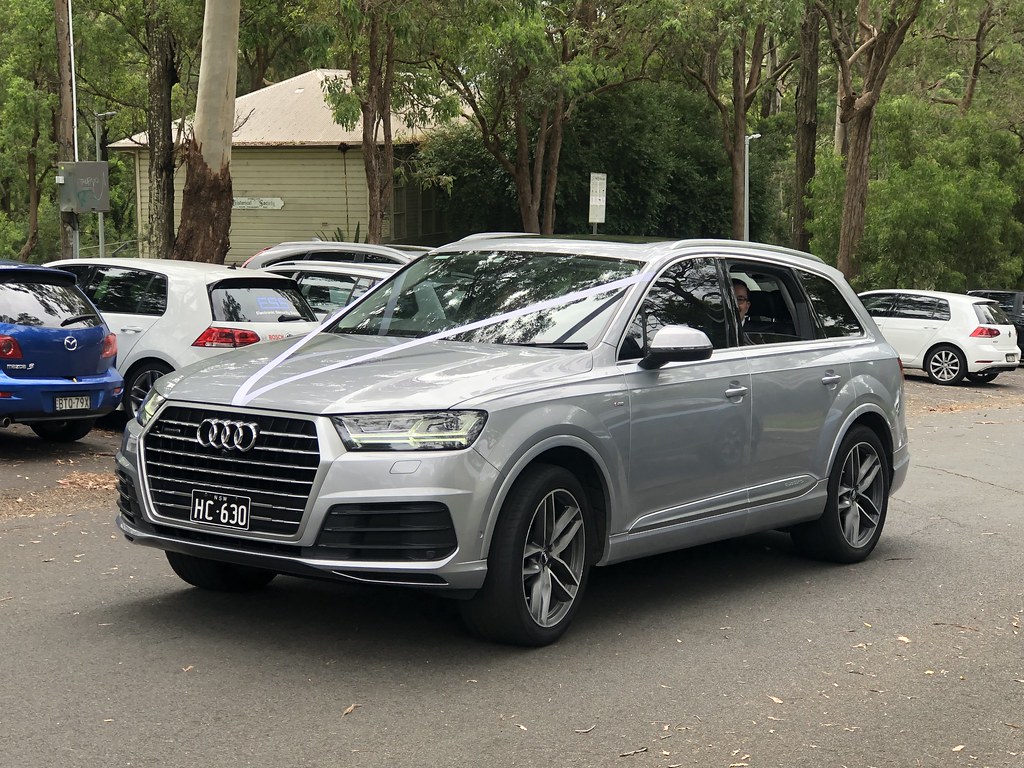
8. **Audi Q7**Another luxury SUV that often promises sophistication and cutting-edge technology, the Audi Q7, unfortunately, also comes with a significant propensity for expensive upkeep. While equipped with virtually every advanced feature an owner could desire, these very innovations often become sources of frustration and substantial financial drain when they inevitably fail.
Marc Skirvin, an expert repairing older vehicles at Cash Auto Salvage, critiques this trend, stating that “German cars are the perfect example of what’s wrong with over-engineering.” He elaborated that manufacturers frequently replace simple mechanical components with more complicated electronic parts. This shift creates a critical dependency: “Should one of these fail, you can’t replace them with a generic version. You need the exact part from Audi, and your local dealership needs to recode it with their proprietary equipment.”
This proprietary nature of parts and the specialized tools required for diagnostics and repair directly translate into higher costs for the owner. According to CarEdge, the total cost to maintain an Audi Q7 over a ten-year period averages out to $13,157. This figure underscores the reality that the allure of advanced features often comes with a steep price when it comes to long-term reliability.
Prospective Q7 owners must factor in these specialized maintenance demands. The combination of complex electronics, expensive parts, and the necessity for dealership-specific servicing means that while the vehicle offers a premium driving experience, it also requires a premium commitment to its ongoing care.
Car Model Information: 2020 Audi Q7 55 Prestige
Name: Audi Q7
Manufacturer: Audi AG
Production: November 2005–present
ModelYears: 2006–present
Class: Full-size,luxury SUV
BodyStyle: SUV
Layout: Longitudinal engine,front-engine, four-wheel-drive
Sp: uk
Categories: 2010s cars, 2020s cars, All-wheel-drive vehicles, All Wikipedia articles written in British English, All articles with dead external links
Summary: The Audi Q7 is a crossover SUV made by the German manufacturer Audi, unveiled in September 2005 at the Frankfurt Motor Show. Production of this seven-seater SUV began in November 2005 at the Volkswagen Bratislava Plant in Bratislava, Slovakia.
The Q7 was the first SUV sold by Audi and went on sale in 2006. Later, Audi’s second SUV, the Q5, was unveiled as a 2009 model. Audi has since unveiled a third SUV model, the Q3, which went on sale in the third quarter of 2011, and a fourth SUV model, the Q2, which went on sale in November 2016. The Q7 shares a Volkswagen Group MLB platform and chassis with the Bentley Bentayga, Lamborghini Urus, Porsche Cayenne and the Volkswagen Touareg.
The Q7 is the second largest vehicle from Audi, being surpassed by the Q6 since 2022. While the Q7 has been the flagship SUV in Audi’s product portfolio, a top-of-the-line model with a lower roof, called the Audi Q8, was released in 2018.
It was one of the vehicles involved in the Volkswagen emissions scandal, with the company ordered to buy back some of the affected cars manufactured between 2009 and 2012. The Q7 is also subject to hundreds of NTSB complaints with many relating to potentially catastrophic engine failure issues, and a class-action lawsuit related to squealing brakes.
Get more information about: Audi Q7
Buying a high-performing used car >>>
Brand: Audi Model: Q7
Price: $38,000 Mileage: 21,133 mi.
Read more about: The Most Iconic Movie Quotes: 15 Lines That Defined Cinema

9. **Mercedes Benz S-Class**The Mercedes-Benz S-Class stands as a pinnacle of luxury sedans, a symbol of automotive elegance and advanced engineering. Yet, beneath its prestigious veneer lies a reality where its sophisticated systems often lead to equally sophisticated, and costly, repair bills. Owning an S-Class requires more than just appreciating its opulence; it demands preparedness for significant financial outlays on maintenance.
Alan Gelfand, an auto mechanic and owner of German Car Depot, sheds light on the specific vulnerabilities of this high-end vehicle. He observes that “After reaching 100,000 miles, S-Classes typically face three major issues with Airmatic suspension systems, oil leaks and advanced electronic system failures.” These are not minor inconveniences but critical components that require expert attention and expensive parts.
The Airmatic suspension system, designed for unparalleled comfort, is a known point of failure that can lead to four-figure repair invoices. Similarly, oil leaks and the failures of advanced electronic systems—which control everything from entertainment to driver-assistance features—contribute significantly to the S-Class’s reputation as a money pit.
CarEdge estimates the ten-year maintenance costs for an S-Class approach $13,000, though Gelfand notes that “that doesn’t include transmission or engine repairs.” This caveat is crucial, as major powertrain issues could push the total ownership cost significantly higher. For all its grandeur, the S-Class is a vehicle that demands constant, often expensive, care to uphold its legendary status.
Read more about: Your Car, Their Rules? 15 Things Every Car Enthusiast Judges About Your Vehicle

10. **Audi A8**While the Audi A8 is undoubtedly a highly capable and luxurious sedan, it presents a compelling case study in the rapid depreciation that can afflict large German luxury vehicles. For a discerning buyer, a three-year-old A8 can offer an astounding opportunity to acquire a premium sedan at a price comparable to a brand-new high-end supermini, reflecting its substantial value loss.
After just three years, this premium sedan retains only slightly over 30% of its original value. This means that from an average new price of £96,165, its average retained value dwindles to around £29,000. This dramatic drop is a significant factor for new car buyers, even if second-hand purchasers can capitalize on the depreciation.
The tendency for large German luxury sedans to suffer from steep depreciation is a historical trend. Many original owners, often seeking the latest technological advancements and prestige, prefer to upgrade to newer models every few years. This consistent supply of relatively young, high-end used vehicles floods the market, driving down prices.
Furthermore, the very factors that make these cars desirable—their size, complex engineering, and powerful engines—also make them expensive to run. Second-hand buyers frequently shy away from older luxury sedans due to the substantial fuel and maintenance costs associated with vehicles in this segment, further exacerbating their depreciation.
Car Model Information: 2019 Audi A8 L 55
Name: Audi A8
Manufacturer: Audi AG
Assembly: Neckarsulm
Production: #D2
Class: Full-size,luxury car
BodyStyle: sedan (automobile)
Platform: List of Volkswagen Group platforms
Layout: FF layout
Related: Audi S8
Predecessor: Audi V8
Categories: 2000s cars, 2010s cars, 2020s cars, All-wheel-drive vehicles, All articles lacking reliable references
Summary: The Audi A8 is a full-size luxury sedan manufactured and marketed by the German automaker Audi since 1994. Succeeding the Audi V8, and now in its fourth generation, the A8 has been offered with either front- or permanent all-wheel drive and in short- and long-wheelbase variants. The first two generations employed the Volkswagen Group D platform, with the current generation deriving from the MLB platform. After the original model’s 1994 release, Audi released the second generation in late 2002, the third in late 2009, and the fourth and current iteration in 2017. Noted as the first mass-market car with an aluminium chassis, all A8 models have used this construction method co-developed with Alcoa and marketed as the Audi Space Frame.
A mechanically upgraded, high-performance version of the A8 debuted in 1996 as the Audi S8. Produced exclusively at Audi’s Neckarsulm plant, the S8 is fitted standard with Audi’s quattro all-wheel drive system. The S8 was only offered with a short-wheelbase for the first three generations, being joined by a long-wheelbase variant for the fourth generation.
Get more information about: Audi A8
Buying a high-performing used car >>>
Brand: Audi Model: A8
Price: $28,330 Mileage: 60,140 mi.
Read more about: Fact Check: 10 Blockbuster Movies That Seriously Bungled Their Science
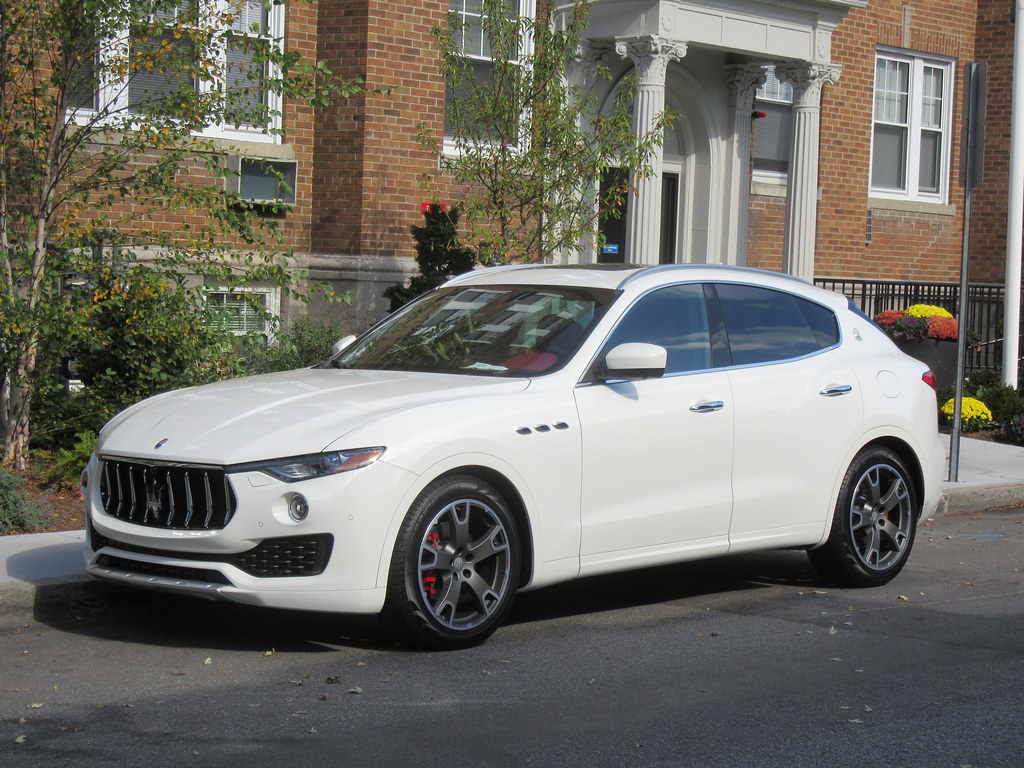
11. **Maserati Levante**It appears that the Maserati Ghibli is not an anomaly in the Italian luxury brand’s portfolio when it comes to significant value erosion. The Maserati Levante, particularly its range-topping Trofeo version, follows a similar trajectory, experiencing some of the steepest depreciation over a three-year period, making many prospective owners wince at the figures.
The Levante Trofeo, with its robust 523bhp V8 engine, delivers an engaging driving experience and boasts a distinctive look with a premium feel. However, its average new price of £143,225 plummets dramatically, retaining only 29.13% of its value. This equates to a staggering loss of more than £100,000 in just three years, bringing its average retained value down to approximately £41,725.
This massive depreciation for a high-performance SUV from a brand still striving to solidify its market position highlights a crucial aspect of luxury vehicle ownership. Such models often have fleeting appeal among buyers who might be swayed by newer, more established competitors or by the perception of long-term reliability and resale value.
The Levante’s situation reinforces the idea that an engaging driving experience and a premium feel don’t always protect against a rapid decline in market worth. For those considering a used luxury SUV, this depreciation translates into a potentially excellent bargain, but for the original buyer, it represents a substantial financial hit.
Car Model Information: 2017 Maserati Levante S
Name: Maserati Levante
Caption: 2016 Maserati Levante S (Europe, pre-facelift)
Manufacturer: Maserati
Production: May 2016–2024
ModelYears: 2017–2024
Assembly: Turin
Designer: Centro Stile Maserati
Class: Mid-size crossover SUV#Luxury vehicles
BodyStyle: Sport utility vehicle
Layout: F4 layout
Platform: Maserati M156 platform
Related: Maserati Ghibli (M157),Maserati Quattroporte VI
Engine: unbulleted list
Motor: eBooster 48V (eTorque)
Transmission: ZF Friedrichshafen,ZF 8HP transmission,Automatic transmission
Drivetrain: Mild hybrid
Wheelbase: 3004 mm
Abbr: on
Length: 5003 mm
Width: 1968 mm
Height: 1679 mm
Weight: convert
Sp: uk
Categories: All-wheel-drive vehicles, Articles with short description, Cars introduced in 2016, Luxury crossover sport utility vehicles, Luxury sport utility vehicles
Summary: The Maserati Levante (Tipo M161) is an executive crossover SUV produced by Italian manufacturer Maserati at the Mirafiori factory in Turin from 2016. The Levante went on sale in Europe in May 2016, and in North America in September 2016. Production of the Levante ended in 2024, commemorated with the release of a top-spec 424BHP special edition.
The Levante was named after a warm, easterly wind that blows in the western Mediterranean Sea, southern France, down to the Strait of Gibraltar. The name of the wind, in turn, comes from the Latin word “levare”, which means “to rise”. Its design is based on the Kubang concept car that debuted at the 2011 Frankfurt Auto Show.
Get more information about: Maserati Levante
Buying a high-performing used car >>>
Brand: Maserati Model: Levante
Price: $19,888 Mileage: 54,539 mi.
Read more about: From Icons to Afterthoughts: 12 Once-Desirable Cars That Lost Their Luster
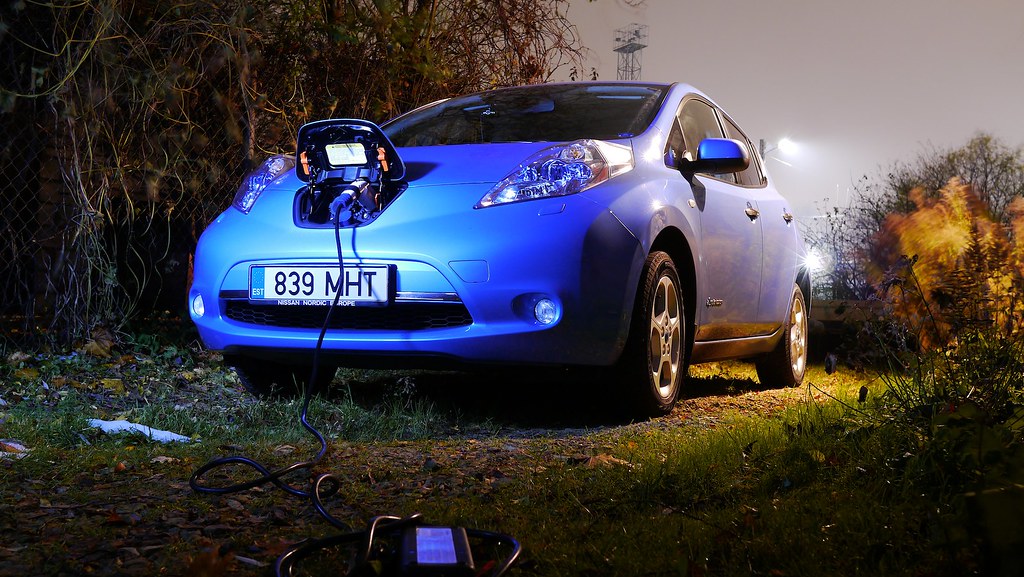
12. **Nissan Leaf**The Nissan Leaf holds a significant place in automotive history as one of the pioneers of mass-market electric vehicles, debuting in 2011 and paving the way for accessible EVs. However, despite its trailblazing past, the Leaf currently finds itself at the very bottom of the depreciation rankings for 2025, signaling a substantial financial pitfall for new owners.
The second-generation model, introduced in 2017, brought meaningful improvements, but its impending discontinuation in 2026, set to be replaced by a new offering, reflects its declining popularity. Factors like increasing supply, falling new car prices, and manufacturer discounting (driven by compliance with ZEV mandates) contribute to its sharp depreciation across the electric vehicle segment, with the Leaf being particularly affected.
After just three years, the Nissan Leaf loses nearly three-quarters of its original value, retaining only 26.97%. For a variant like the 39kWh Acenta, an average new price of £29,290 dwindles to an average retained value of just £7,900. This makes it the fastest depreciating model on our list.
While this steep depreciation is painful for original buyers, it transforms the Leaf into an attractive budget-friendly EV option for used car shoppers. However, its 239-mile range, while once competitive, now lags behind the more advanced, longer-range, and better-value electric cars entering the market, further contributing to its diminished resale appeal.
Car Model Information: 2018 Nissan Titan SV
Name: Nissan Leaf
Caption: Third generation Nissan Leaf
Manufacturer: Nissan
Production: October 2010 – present
ModelYears: 2011–present
Class: Unbulleted list
BodyStyle: Unbulleted list
Layout: Front-engine, front-wheel-drive layout
Predecessor: Unbulleted list
Categories: 2020s cars, All articles containing potentially dated statements, All articles with dead external links, Articles containing Japanese-language text, Articles containing potentially dated statements from December 2015
Summary: The Nissan Leaf is a battery-electric car manufactured by Nissan, produced since 2010. It was offered exclusively as a 5-door hatchback which since then has become a crossover SUV model. The term “LEAF” serves as a backronym to leading environmentally-friendly affordable family car. The Leaf was unveiled on 1 August 2009 as the world’s first mass market electric and zero-emission vehicle. Among other awards and recognition, it received the 2010 Green Car Vision Award, the 2011 European Car of the Year, the 2011 World Car of the Year, and the 2011–2012 Car of the Year Japan. The Leaf’s range on a full charge has been steadily increased from 117 km (73 miles) to 364 km (226 miles) (EPA rated) by the use of larger battery packs and several minor improvements. As of September 2021, European sales totalled more than 208,000, and as of December 2021, over 165,000 had been sold in the U.S., and 157,000 in Japan. Global sales across both generations totalled 577,000 by February 2022. The Leaf was the world’s all-time top selling plug-in electric car until it was surpassed in early 2020 by the Tesla Model 3.
Get more information about: Nissan Leaf
Buying a high-performing used car >>>
Brand: Nissan Model: Leaf
Price: $21,685 Mileage: 89,835 mi.
Read more about: The Ultimate Guide for Pet Owners: Uncovering the Top 14 Vehicles for Safe and Comfortable Travel with Canine Companions
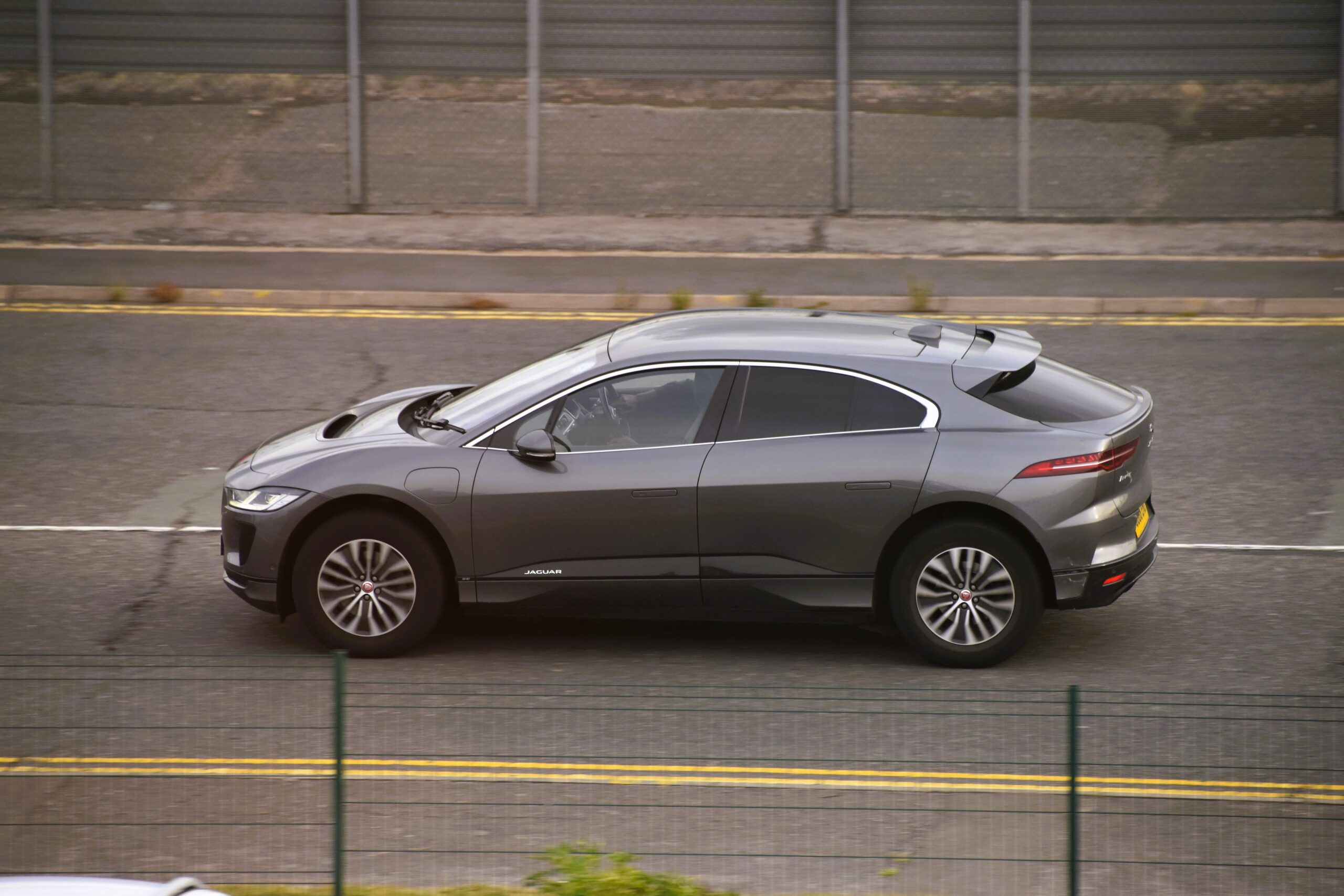
13. **Jaguar I-Pace**Jaguar’s I-Pace was once considered a trailblazer, a luxury electric vehicle that was arguably ahead of its time. However, the rapidly evolving EV market has been unforgiving, with competitors quickly catching up and, in many cases, surpassing its early advantages. This has had a significant impact on its resale value, making it a considerable money pit in terms of depreciation.
After three years, the I-Pace, particularly the 90kWh 400 R-Dynamic variant, holds just over 30% of its original value. With an average new price of £69,995, its average retained value falls to approximately £21,525. This dramatic drop signifies that while it once boasted an impressive 292-mile range, even more affordable models now offer comparable or superior range capabilities.
Jaguar’s upcoming brand transformation, including the introduction of the high-end Type 00 in 2026, will likely have future buyers hoping for better resale values than those seen with the outgoing I-Pace. Its early lead in the luxury EV segment was quickly eroded as other manufacturers brought their competitive offerings to market.
For used car shoppers, however, this steep depreciation presents a tempting prospect. Picking up a three-year-old model for just over £20,000 can be an attractive proposition, offering a luxury electric SUV experience at a fraction of its original cost, despite the financial hit for the initial owner.
Car Model Information: 2022 Jaguar I-PACE HSE EV400 AWD Automatic
Name: Jaguar I-Pace
Manufacturer: Jaguar Land Rover
Production: 2018–2024
Assembly: Magna Steyr
Designer: Ian Callum
Class: Executive car
BodyStyle: hatchback
Layout: all-wheel-drive
Platform: Jaguar Land Rover car platforms#D7e
Motor: Permanent magnet synchronous motor
Abbr: on
Transmission: 1-speed direct-drive reduction
Battery: kW·h,Lithium-ion battery
ElectricRange: United States Environmental Protection Agency
Charging: 11kW AC (7.4kW “1-phase/32A only” AC 2018–2020),100 kW DC
Wheelbase: 2990 mm
Length: 4682 mm
Width: ubl
Height: 1565 mm
Weight: 2133 kg
Sp: uk
Categories: 2020s cars, All-wheel-drive vehicles, All Wikipedia articles written in British English, All accuracy disputes, All articles lacking reliable references
Summary: The Jaguar I-Pace (stylised as I-PACE) is a battery-electric car produced by Jaguar Land Rover (JLR) under their Jaguar marque. A five-door executive car with a hatchback, the I-Pace was announced in March 2018, with European deliveries beginning in June 2018 and North American deliveries starting in October 2018. The I-Pace was discontinued in 2024 due to slowing sales and a change in corporate vision.
Get more information about: Jaguar I-Pace
Buying a high-performing used car >>>
Brand: Jaguar Model: I-Pace
Price: $30,999 Mileage: 44,699 mi.
Read more about: Beyond the Badge: Unpacking the ‘Stuck-Up’ Stereotypes of 9 Luxury Car Owners
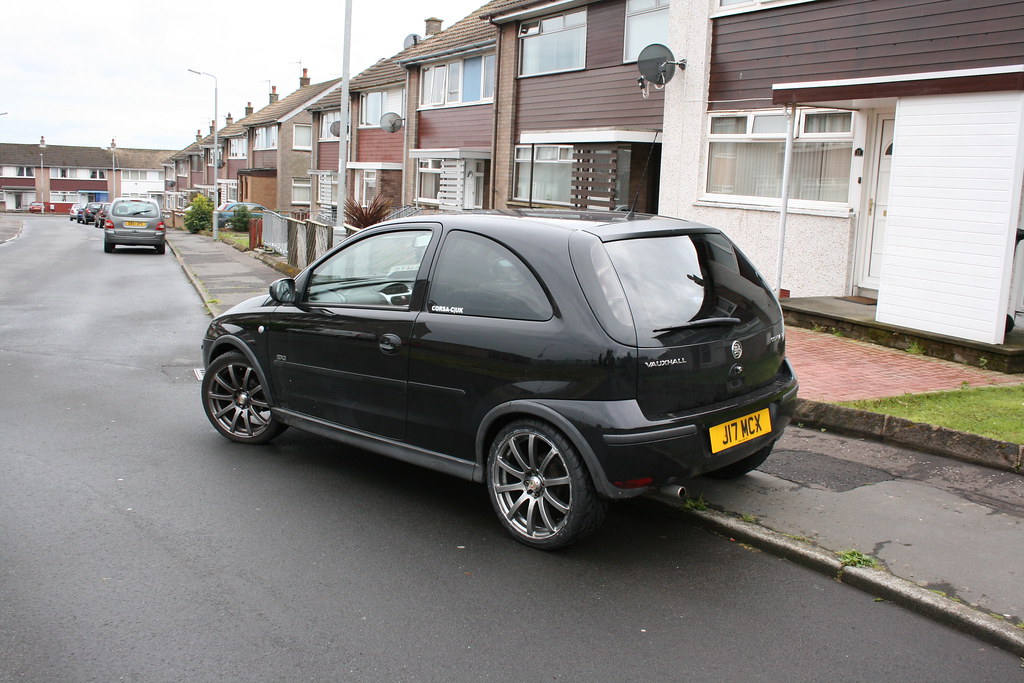
14. **Vauxhall Corsa Electric**The Vauxhall Corsa Electric, built on the same platform as the Peugeot e-208, unfortunately, faces an even steeper depreciation curve than its French counterpart. While designed to offer a familiar driving experience for those transitioning from petrol to electric vehicles, its new car price proves to be a major drawback, impacting its value retention significantly.
Despite being a competent supermini, a brand-new Corsa Electric costs over £10,000 more than its entry-level petrol equivalent, unless significant discounts are negotiated. This initial high price, combined with market pressures on EVs, leads to its dramatic value loss. The 51kWh 156 GS variant, for instance, retains only 30.34% of its value after three years.
This means that from an average new price of £32,625, its average retained value plummets to just £9,900. While the Peugeot e-208 ranks as the 22nd worst depreciating model, the Corsa Electric takes the 7th spot on the list of fastest depreciating cars, highlighting its particular vulnerability in the used car market.
However, for individuals specifically in the market for a used electric car, these depreciation figures present an excellent opportunity. Substantial savings can be made by opting for a three-year-old Corsa Electric, acquiring a modern EV for a significantly reduced price compared to its initial showroom cost.
Car Model Information: 2023 Mazda CX-5 2.5 S Select
Name: Opel Corsa
Caption: Opel Corsa F (pre-facelift)
Manufacturer: General Motors,PSA Group,Stellantis
Aka: Vauxhall Corsa (United Kingdom),Vauxhall Nova (United Kingdom, 1982–1993),Holden Barina (Australia and New Zealand, 1993–2006)
Production: 1982–present (Europe),1993–present (Vauxhall brand)
Class: Supermini
Layout: Front-engine, front-wheel-drive layout
Predecessor: Opel Kadett C
Categories: 1980s cars, 1990s cars, 2000s cars, 2010s cars, 2020s cars
Summary: The Opel Corsa is a supermini car manufactured and marketed by Opel since 1982. The car is known as the Vauxhall Corsa in the United Kingdom. Under General Motors ownership of Opel before 2017, the Corsa was also marketed under various nameplates under Chevrolet, Holden and Buick brands.
The Corsa was once the best-selling car in the world in 1998, recording 910,839 sales. At that time, the Corsa assembled on four continents, marketed under five different marques and offered in five body styles. By 2007, over 18 million Corsas had been sold globally.
Get more information about: Opel Corsa
Buying a high-performing used car >>>
Brand: Vauxhall Model: Corsa Electric
Price: $22,129 Mileage: 32,603 mi.
Read more about: Unveiling the Reality: 15 Small SUVs Undergo IIHS’s Rigorous New Side Impact Crash Test for Consumer Safety Insight
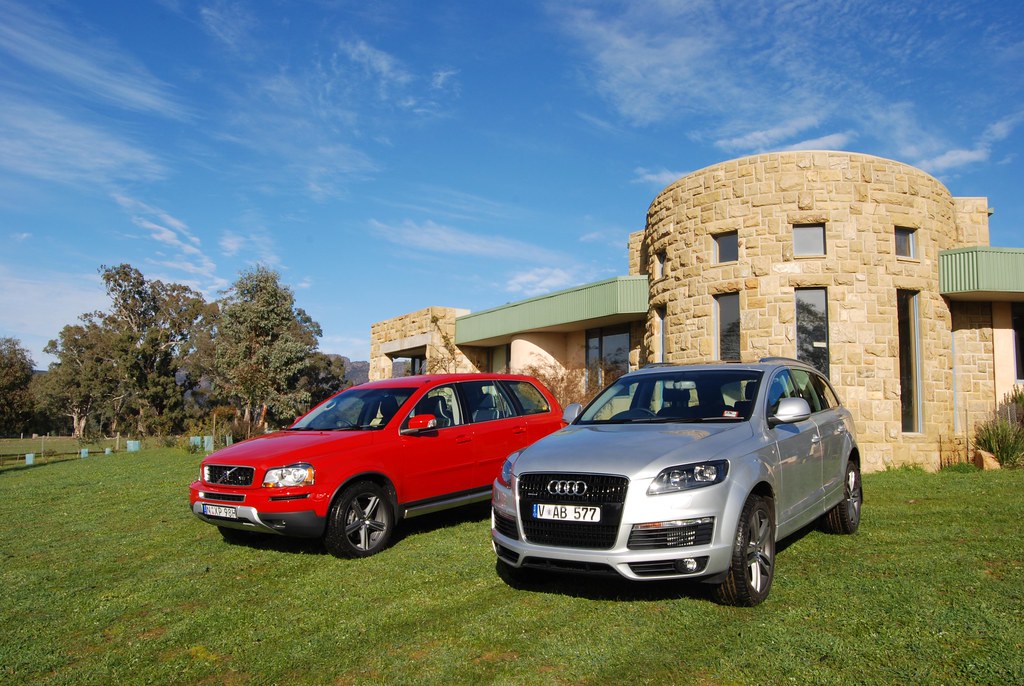
15. **Volvo XC90**The Volvo XC90 is celebrated for its blend of Swedish luxury, safety, and a smooth, secure ride, making it a popular choice in the premium SUV segment. However, maintaining this sophisticated vehicle in optimal condition demands both diligence and, importantly, deep pockets, positioning it as a significant financial commitment over time.
According to Car Edge, the estimated maintenance costs for a Volvo XC90 can accumulate to $12,815 over a ten-year period. This substantial figure reflects the complexity of its engineering and the specialized care required for its advanced systems. The vehicle’s advanced driver-assistance systems, designed to enhance safety and convenience, are intricate and costly to diagnose and repair when issues arise.
Furthermore, many XC90 variants feature hybrid powertrains and sophisticated air suspension systems. While these technologies contribute to its refined driving dynamics and efficiency, they also necessitate specialized servicing and more expensive replacement parts. These high-tech components are not only pricier but often require expert technicians with brand-specific knowledge.
Therefore, while the Volvo XC90 offers a compelling package of luxury, performance, and safety, prospective owners must be fully aware of the ongoing financial demands. The consistent upkeep required for its cutting-edge features ensures that maintaining an XC90 is a significant, long-term investment, underscoring that even vehicles renowned for reliability can present formidable maintenance bills.
Car Model Information: 2016 Volvo XC90 T6 Momentum
Name: Volvo XC90
Caption: 2025 Volvo XC90
Manufacturer: Volvo Cars
Production: 2002–present
Class: Executive car,crossover SUV
BodyStyle: SUV
Layout: ubl
Categories: 2010s cars, 2020s cars, All-wheel-drive vehicles, All articles with dead external links, All articles with unsourced statements
Summary: The Volvo XC90 is a mid-size luxury SUV manufactured and marketed by Volvo Cars since 2002 and in its second generation.
The first generation was introduced at the 2002 North American International Auto Show and used the Volvo P2 platform shared with the first generation Volvo S80 and other large Volvo cars. It was manufactured at Volvo’s Torslandaverken in Sweden. Volvo moved production equipment of the first generation to China and ended Swedish production at the end of 2014, renaming the car as the Volvo XC Classic (or Volvo XC90 Classic).
At the end of 2014, the second generation XC90 was introduced. It is based on a new global platform, the Scalable Product Architecture (SPA). Both generations of the XC90 have won Motor Trend’s SUV of the Year award in their debuts.
In late 2022, the electric-only EX90 was introduced as the successor of the XC90. However, in September 2024, Volvo launched the second facelift of XC90, and stated that both models would be sold together for the foreseeable future.
Get more information about: Volvo XC90
Buying a high-performing used car >>>
Brand: Volvo Model: XC90
Price: $6,750 Mileage: 171,243 mi.
Read more about: 15 Undervalued 1970s Classic Cars That Are Smart Buys for Enthusiasts Today
Our in-depth analysis reveals a stark truth: the allure of luxury, high performance, or groundbreaking technology in a vehicle often comes hand-in-hand with formidable financial challenges. Whether it’s the relentless frequency of expensive repairs for specialized parts or the precipitous drop in market value, these 15 vehicles stand as powerful reminders that a car’s true cost extends far beyond its initial sticker price. Armed with this knowledge, we hope consumers can navigate the automotive market with greater foresight, steering clear of the infamous ‘money pits’ and making choices that truly align with their long-term financial well-being. The road to smart car ownership is paved with informed decisions, not just open roads and thrilling drives.

